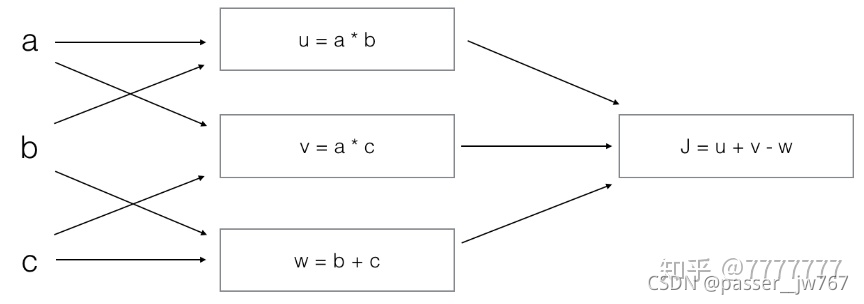视频链接:【中英字幕】吴恩达深度学习课程第一课 — 神经网络与深度学习
本文题目来源:
英文习题
1.What does a neuron compute?
A. A neuron computes the mean of all features before applying the output to an activation function
B. A neuron computes a linear function (z = Wx + b) followed by an activation function
C. A neuron computes an activation function followed by a linear function (z = Wx + b)
D. A neuron computes a function g that scales the input x linearly (Wx + b)
Note: The output of a neuron is a = g(Wx + b) where g is the activation function (sigmoid, tanh, ReLU, …).
2.Which of these is the “Logistic Loss”?
A. L(i)(y^ (i),y(i))=−(y(i)log(y^ (i))+(1−y(i))log(1−y^(i)))
B. L(i)(y^ (i),y(i))=max(0,y(i)−y^(i))
C. L(i)(y^ (i),y(i))=∣y(i)−y^(i)∣2
D. L(i)(y^ (i),y(i))=∣y(i)−y^(i)∣
Note: We are using a cross-entropy loss function.(Click Here)
(上面看不了可下载这个免费平替版)
3.Suppose img is a (32,32,3) array, representing a 32x32 image with 3 color channels red, green and blue. How do you reshape this into a column vector?
A. x = img.reshape((3232,3))
B. x = img.reshape((3,3232))
C. x = img.reshape((32323,1))
D. x = img.reshape((1,32*32,*3))
4.Consider the two following random arrays “a” and “b”:
a = np.random.randn(2, 3) # a.shape = (2, 3)
b = np.random.randn(2, 1) # b.shape = (2, 1)
c = a + b
What will be the shape of “c”?
A. The computation cannot happen because the sizes don’t match. It’s going to be “Error”!
B. c.shape = (3, 2)
C. c.shape = (2, 3)
D. c.shape = (2, 1)
5.Consider the two following random arrays “a” and “b”:
a = np.random.randn(4, 3) # a.shape = (4, 3)
b = np.random.randn(3, 2) # b.shape = (3, 2)
c = a*b
What will be the shape of “c”?
A. c.shape = (3, 3)
B. c.shape = (4,2)
C.The computation cannot happen because the sizes don’t match. It’s going to be “Error”!
D.c.shape = (4, 3)
6. Suppose you have nx input features per example. Recall that X=[x(1)x(2)…x(m)]. What is the dimension of X?
A. (m,1)
B. (1,m)
C. (m,nx)
D. (nx,m)
7.Recall that “np.dot(a,b)” performs a matrix multiplication on a and b, whereas “a*b” performs an element-wise multiplication.
Consider the two following random arrays “a” and “b”:
a = np.random.randn(12288, 150) # a.shape = (12288, 150)
b = np.random.randn(150, 45) # b.shape = (150, 45)
c = np.dot(a,b)
What is the shape of c?
A. The computation cannot happen because the sizes don’t match. It’s going to be “Error”!
B. c.shape = (12288, 45)
C. c.shape = (12288, 150)
D. c.shape = (150,150)
8.Consider the following code snippet:
# a.shape = (3,4)
# b.shape = (4,1)
for i in range(3):
for j in range(4):
c[i][j] = a[i][j] + b[j]
How do you vectorize this?
A. c = a + b.T
B. c = a.T + b.T
C. c = a.T + b
D. c = a + b
9.Consider the following code:
a = np.random.randn(3, 3)
b = np.random.randn(3, 1)
c = a*b
What will be c? (If you’re not sure, feel free to run this in python to find out).
A. This will invoke broadcasting, so b is copied three times to become (3,3), and ∗ is an element-wise product so c.shape will be (3, 3)
B. This will invoke broadcasting, so b is copied three times to become (3, 3), and ∗ invokes a matrix multiplication operation of two 3x3 matrices so c.shape will be (3, 3)
C. This will multiply a 3x3 matrix a with a 3x1 vector, thus resulting in a 3x1 vector. That is, c.shape = (3,1).
D. It will lead to an error since you cannot use “*” to operate on these two matrices. You need to instead use np.dot(a,b)
10.Consider the following computation graph.

What is the output J?
A. J = (c - 1)(b + a)
B. J = (a - 1) (b + c)
C. J = ab + bc + a*c
D. J = (b - 1) * (c + a)
中文习题
1.神经元节点计算什么?
A.神经元节点先计算激活函数,再计算线性函数(z = Wx + b)
B.神经元节点先计算线性函数(z = Wx + b),再计算激活。
C.神经元节点计算函数g,函数g计算(Wx + b)。
D.在将输出应用于激活函数之前,神经元节点计算所有特征的平均值
请注意:神经元的输出是a = g(Wx + b),其中g是激活函数(sigmoid,tanh,ReLU,…)。
2.下面哪一个是Logistic损失?
A. L(i)(y^ (i),y(i))=−(y(i)log(y^ (i))+(1−y(i))log(1−y^(i)))
B. L(i)(y^ (i),y(i))=max(0,y(i)−y^(i))
C. L(i)(y^ (i),y(i))=∣y(i)−y^(i)∣2
D. L(i)(y^ (i),y(i))=∣y(i)−y^(i)∣
请注意:我们使用交叉熵损失函数。(点击此处)
(上面看不了可下载这个免费平替版)
3.假设img是一个(32,32,3)数组,具有3个颜色通道:红色、绿色和蓝色的32x32像素的图像。 如何将其重新转换为列向量?
A. x = img.reshape((3232,3))
B. x = img.reshape((3,3232))
C. x = img.reshape((32323,1))
D. x = img.reshape((1,32*32,*3))
4.看一下下面的这两个随机数组“a”和“b”:
a = np.random.randn(2, 3) # a.shape = (2, 3)
b = np.random.randn(2, 1) # b.shape = (2, 1)
c = a + b
数组c的维度是多少?
A.计算无法发生,因为大小不匹配,会发生“错误”!
B. c.shape = (3, 2)
C. c.shape = (2, 3)
D. c.shape = (2, 1)
5.看一下下面的这两个随机数组“a”和“b”:
a = np.random.randn(4, 3) # a.shape = (4, 3)
b = np.random.randn(3, 2) # b.shape = (3, 2)
c = a*b
请问数组c的维度是多少?
A. c.shape = (3, 3)
B. c.shape = (4,2)
C.计算无法发生,因为大小不匹配,会发生“错误”!
D.c.shape = (4, 3)
6.假设你的每一个实例有n_x个输入特征,想一下在X=[x^(1), x^ (2)…x^(m)]中,X的维度是多少?
A. (m,1)
B. (1,m)
C. (m,nx)
D. (nx,m)
7.回想一下,np.dot(a,b)在a和b上执行矩阵乘法,而`a * b’执行元素方式的乘法。
看一下下面的这两个随机数组“a”和“b”:
a = np.random.randn(12288, 150) # a.shape = (12288, 150)
b = np.random.randn(150, 45) # b.shape = (150, 45)
c = np.dot(a,b)
数组c的维度是多少?
A. 计算无法发生,因为大小不匹配,会发生“错误”!
B. c.shape = (12288, 45)
C. c.shape = (12288, 150)
D. c.shape = (150,150)
8.看一下下面的这个代码片段:
# a.shape = (3,4)
# b.shape = (4,1)
for i in range(3):
for j in range(4):
c[i][j] = a[i][j] + b[j]
请问要怎么把它们向量化?
A. c = a + b.T
B. c = a.T + b.T
C. c = a.T + b
D. c = a + b
这题答案的翻译有点乱,可以自己去看看英文版本的
9.看一下下面的代码:
a = np.random.randn(3, 3)
b = np.random.randn(3, 1)
c = a*b
请问c的维度会是多少? (如果你不确定,就跑一下这段代码试试).
A. 这将会使用广播机制,b会被复制三次,就会变成(3,3),再使用元素乘法。所以: c.shape = (3, 3).
B. 这会引发广播机制,所以b会被复制三次编程(3,3),并且∗ 调用两个3x3矩阵的矩阵乘法运算,使c.shape为3,3)
C. 这将使3x3矩阵a与3x1向量相乘,从而得到3x1向量。也就是说,c.shape=(3,1)
D. 由于不能使用“*”对这两个矩阵进行操作,因此将导致错误。您需要使用np.dot(a,b)
10.看一下下面的计算图

输出的J是什么?
A. J = (c - 1)(b + a)
B. J = (a - 1) (b + c)
C. J = ab + bc + ac
D. J = (b - 1) * (c + a)
答案
- B
- A
- C
- C(由python的broadcasting,b会自动扩充为(2,3)以能够和a相加)
- C
- D
- B
- A(为什么不选C?注意,给出的for循环中是a[i][j]+b[j],而不是a[j][i]+b[j]!,如果代码给的是后者,则选C)
- A
- B